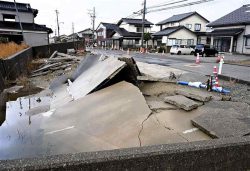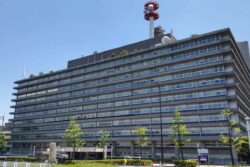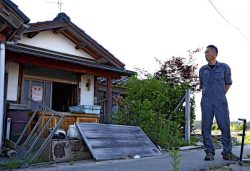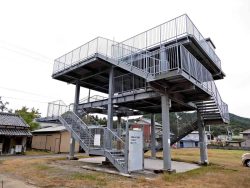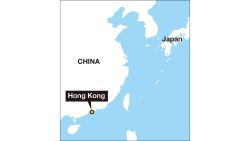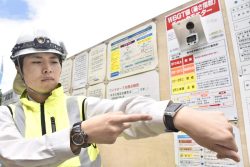Publicly-Funded Removal of Quake-Damaged Houses in Japan’s Ishikawa Prefecture Sees Slow Progress; Authorities Expect to Demolish At Least 32,000 Homes
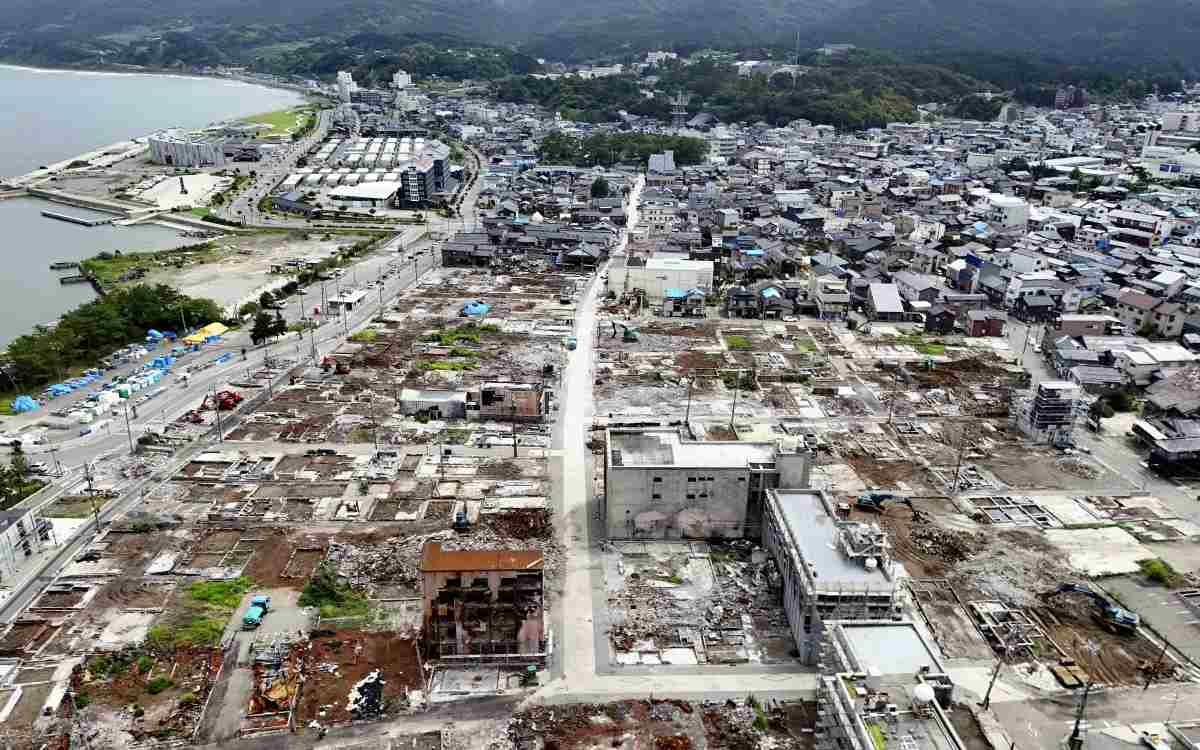
An area around Asaichi-dori avenue in Wajima, Ishikawa Prefecture, is seen Sunday. The area was devastated by a massive fire in the Noto Peninsula Earthquake.
6:00 JST, September 3, 2024
Eight months after the Noto Peninsula Earthquake struck, Ishikawa Prefecture has seen little progress in demolishing damaged buildings using public funds.
As of Aug. 19, only 10% of applications to remove properties had been completed. It is estimated that at least 32,000 houses will be demolished at public expense. In order to speed up the process, the prefectural government plans to nearly double the number of demolition workers and remove all of the houses by the end of October 2025.
According to the prefecture, the rate of houses demolished using public funding was 16.2% in Anamizu and 15.2% in Suzu, both exceeding the prefectural average. However, removal rates in Noto and Wajima were 8.9% and 6.2% respectively. The two towns and two cities in the Okunoto region were severely affected by the disaster.
In order to push forward with the publicly-funded removals, authorities have secured minshuku guest houses and rented houses, among other places, to accommodate demolition workers in the four municipalities. There are currently 661 teams of four or five workers in the prefecture. Of these, 175 teams are located in Suzu, 140 in Wajima, 76 in Noto and 60 in Anamizu.
The prefecture is planning to increase the total number of demolition teams to 1,120, of which 345 will be in Wajima. Authorities have already secured 1,144 teams.
Meanwhile, about 3.32 million tons of disaster waste is expected to be generated because of the demolition, about nine times the average yearly amount of domestic waste generated in the prefecture. The prefecture plans to cooperate with other local governments and transport the waste by ship or rail to areas including Tokyo, Osaka Prefecture and Yokohama.
"Society" POPULAR ARTICLE
-

M4.9 Earthquake Hits Tokyo, Neighboring Prefectures
-

Israeli Tourists Refused Accommodation at Hotel in Japan’s Nagano Pref., Prompting Protest by Israeli Embassy and Probe by Prefecture
-

M7.5 Earthquake Hits Northern Japan; Tsunami Waves Observed in Hokkaido, Aomori and Iwate Prefectures
-

Tsukiji Market Urges Tourists to Avoid Visiting in Year-End
-
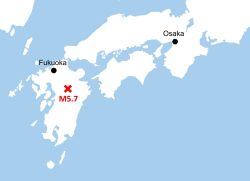
M5.7 Earthquake Hits Japan’s Kumamoto Pref., Measuring Upper 5 Intensity, No Tsunami Expected
JN ACCESS RANKING
-

Tokyo Economic Security Forum to Hold Inaugural Meeting Amid Tense Global Environment
-

Keidanren Chairman Yoshinobu Tsutsui Visits Kashiwazaki-Kariwa Nuclear Power Plant; Inspects New Emergency Safety System
-

Imports of Rare Earths from China Facing Delays, May Be Caused by Deterioration of Japan-China Relations
-

University of Tokyo Professor Discusses Japanese Economic Security in Interview Ahead of Forum
-

Japan Pulls out of Vietnam Nuclear Project, Complicating Hanoi’s Power Plans


